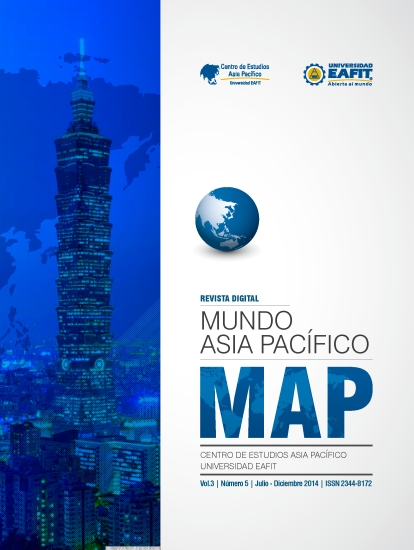Systemic risks of asean+3 financial integration: challenges, opportunities and the future
Main Article Content
Keywords
ASEAN 3, CMIM, financial integration, FTA, trade integration, systemic risks
Abstract
There has been rapid de facto trade integration in ASEAN+3 over the past decades, and experts have noted that this leads to greater de facto financial integration. These two therefore have reinforcing effects on each other. However, this cycle brings with it systemic financial risks that could lead to balance of payments crises, capital reversals, and exchange rate variability from current account imbalances which have caused global disruptions historically. The way to keep history from repeating itself is to address these risks. The Chiang Mai Initiative Multilateralization (CMIM) is one way of doing so, by providing an insurance mechanism that can safeguard the trigger points for said crises. However, the development of de jure integration policies such as this has been slow, much slower than policies that further trade integration, posing a systemic risk. This paper clarifies the implications of this; discusses the possible reasons for this discrepancy; and provides potential solutions that will enable ASEAN+3 to speed up the process of prudent financial integration.
Downloads
References
ASEAN Secretariat (2010). Joint Ministerial Statement of The 13th ASEAN+3 Finance Ministers’ Meeting. Available at: http://www.asean.org/archive/documents/JMS_13th_AFMM+3.pdf
Asia Regional Trade Integration Center (2015). Integration Indicators. Asian Development Bank. Available at: http://aric.adb.org/integrationindicators/result?sort=country&filter=all&r_indicators%5B0%5D=TCINTSHR_DOT&r_reporters%5B0%5D=673&r_reporters%5B1%5D=273&r_partners%5B0%5D=673&r_partners%5B1%5D=273&r_years%5B0%5D=2012
Bhagwati, Jagdish (2008). Termites in the Trading System: How Preferential Agreements Undermine Free Trade. Oxford: Oxford University Press.
Cheung, Y.W., Yiu, M.S. and Chow, K.C. (2008). Measuring economic integration: the case of Asian economies. Regional Financial Integration in Asia: Present And Future, 2008, vol. 42, pp 136-158 from Bank for International Settlements. Available at http://www.bis.org/publ/bppdf/bispap42e.pdf
Dent, Christopher M. (2013). Paths ahead for East Asia and Asia–Pacific regionalism. International Affairs 89(4): 963–985.
Eichengreen, B. and Park, Yung Chul (2003). Why Has There Been Less Financial Integration in Asia than in Europe?” Available at http://ies.berkeley.edu/pubs/workingpapers/PEIF-4-Fiscal_Stability.pdf.
Fukunaga, Yoshifumi and Isono, Ikumo. (2013). Taking ASEAN+1 FTAs towards the RCEP: A mapping study. Economic Research Institute for ASEAN and East Asia (ERIA) Discussion Papers.
Gehringer, Agnieszka (2013). Financial liberalization, financial development and productivity growth — An overview. Economics Discussion Papers, No 2013-46, Kiel Institute for the World Economy: http://www.economicsejournal.org/economics/discussionpapers/2013-46.
IMF Staff Papers (2012). The liberalization and management of capital flows: An institutional view. International Monetary Fund. Available at http://www.imf.org/external/np/pp/eng/2012/111412.pdf.
Japan External Trade Organization (2012). JETRO Global Trade and Investment Report 2012. Available at http://www.jetro.go.jp/ext_images/en/reports/white_paper/trade_invest_2012.pdf
Irwin, Douglas A. (1996), Against the Tide: An Intellectual History of Free Trade, New Haven: Princeton University Press.
Isard, Peter. (2005). Globalization and the International Financial System: What’s Wrong and What Can Be Done. Cambridge: Cambridge University Press.
Kuroda, Haruhiko and Kawai, Masahiro. (2003). Strengthening regional financial cooperation in East Asia. PRI Discussion Paper Series (No.03A.10).
Kwan, Yum and Qui, Larry D. (2010). The ASEAN+3 trading bloc. Journal of Economic Integration 25(1): 1-31
Lane, Philip R. and Milesi-Ferretti, Gian Maria (2003). International Financial Integration. IMF Staff Papers Vol. 50, Special Issue. Available at http://www.imf.org/external/pubs/ft/staffp/2002/00-00/pdf/lane.pdf
Menon, Jayant (2013). How to multilateralise Asian regionalism. ADB. Available at:http://www.eastasiaforum.org/2013/01/06/how-to-multilateralise-asian-regionalism/.
Monetary Authority of Singapore (2007). Asian Financial And Monetary Integration — Challenges and Propects. Singapore: Monetary Authority of Singapore. Available at http://www.asia-studies.com/asia/MAS/Research%20Papers/AsianFinancial.pdf.
Park, Yung Chul and Wyplosz, Charles (2008). Monetary and financial integration in East Asia: The relevance of European experience. Economic Papers 329 (2008), European Commission.
Park, Y. and Song, C. (2011). Prospects for monetary cooperation in East Asia. ADBI Working Paper No. 314. Tokyo: Asian Development Bank Institute. Available at http://www.adbi.org/workingpaper/2011/10/21/4739.prospects.monetary.cooperation.east.asia/.
Pasadilla, Gloria O. (2008). Financial services integration in East Asia: Lessons from the European Union. Asia-Pacific Research and Training Network on Trade Working Paper Series, No. 53.
Petri, Peter A., Plummer, Michael G. and Zhai Fan (2011). The Trans-Pacific partnership and Asia Pacific integration: A quantitative assessment. East-West Center Working Papers, Economics Series, No.119.
Pongsaparn, R. and Unteroberdoerster, O. (2011). Financial integration and rebalancing in Asia”. IMF Working Paper Asia and Pacific Department, WP/11/243. Available at http://www.imf.org/external/pubs/ft/wp/2011/wp11243.pdf.
Siregar, R. and Chabchitrchaidol, A. (2013). Enhancing the effectiveness of CMIM and AMRO: Selected immediate challenges and tasks. ADBI Working Paper 403. Tokyo: Asian Development Bank Institute. Available at http://www.adbi.org/workingpaper/2013/01/17/5454.enhancing.effectiveness.cmim.amro/.
Sussangkarn C. (2011). Chiang Mai Initiative Multilateralization: Origin, development, and outlook. Asian Economic Policy Review, 6: 203–220.
Terada, Takashi (2011). ASEAN+3: Becoming more like a normal regionalism?. In Mark Beeson and Richard Stubbs (eds.) Routledge Handbook of Asian Regionalism, Routledge, 2011, 364-374.
Urata, Shujiro (2007). Competitive regionalism in East Asia: An economic analysis. GIARI Working Paper, Waseda University.

